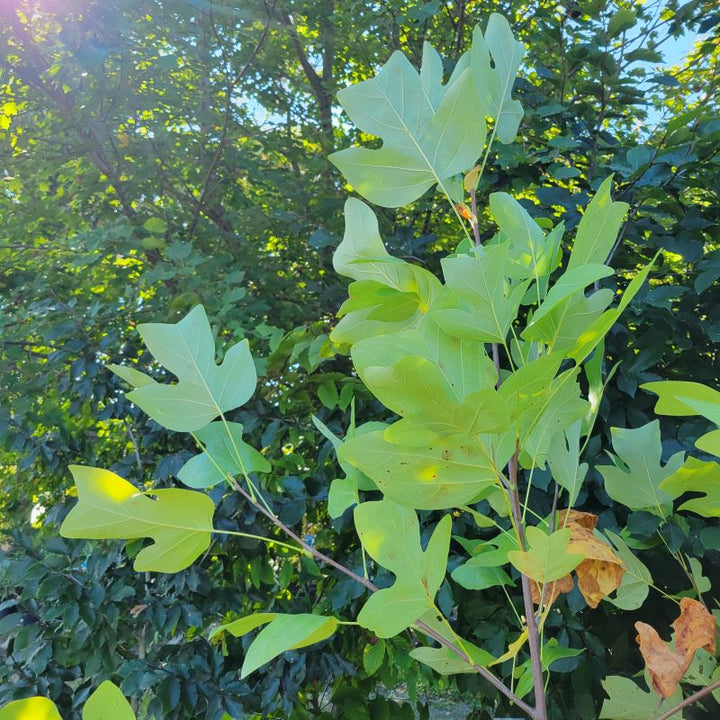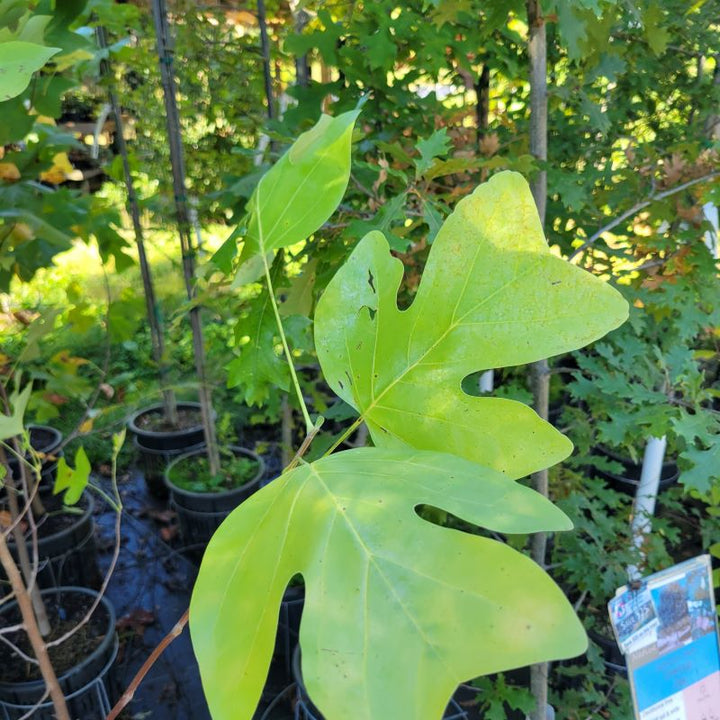Liriodendron tulipifera (Tulip Poplar) Unity Grown
- Low stock - 5 items left
- Inventory on the way
Liriodendron tulipifera, also called tulip poplar or tuliptree, is a large, fast-growing decidious tree in the Magnolia family. Both its scientific and common names refer to its showy late spring/early summer flowers, which are vaguely magnolia-like in shape and size, but in bright shades of yellow-green and orange; although the common name tulip poplar is often used to refer to Liriodendron tulipifera, it is not closely related to poplar trees of any variety. This large tree's large flowers are attractive to pollinators, including butterflies and hummingbirds, and its large size and dense, four-lobed foliage makes its branches an excellent nesting site for a variety of birds and small mammals; foliage is as ornamental as it is ecologically valuable, wth bright, golden yellow hues in the fall. Typically growing to a size of 60-120' tall and 30-60' wide, tuliptrees are very fast growing, and may put on 3-5' in height per year; this makes sense, as especially mature wild specimens have even been found growing to 200' tall with trunks up to 8-10' in diameter!
Since its rapid growth rate may make the tuliptree more brittle as it ages, care should be taken with choosing a good planting location for tuliptrees to avoid limbs causing damage to structures or vehicles; although branches may cause problems in older specimens, roots are not invasive nor surface spreading, as trees tend to reseed rather than sucker. With a large habit and a rapid growth rate, tuliptrees make for excellent shade trees and work well as a keystone species in forest rehabilitation projects since they can create a shady understory faster than other large trees. Tulip poplar grows best in well-drained medium-moist or medium-dry soils, and loves bright, sunny areas; Liriodendron tulipifera also tolerates rabbit and deer damage, black walnut juglone soils, and sites with wet or clay soils, making it a hardy and versatile choice for a large shade tree.






